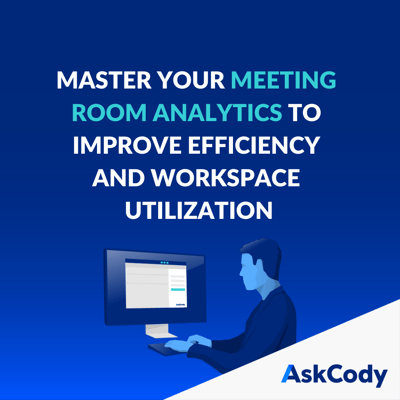Are overhead expenses eating your law firm's profits? To drive revenue, the first step is to look at the biggest profit-killer — soaring overhead costs. Here's how to find and fix profit killers like office rent, turnovers, and admin costs, and drive up your law firm's revenue.
All law firms — whether they are single-lawyer practices in the Midwest or massive firms in NYC — have one thing in common: They are looking for ways to make more money. The most obvious path is to make more money by taking on more clients.
More clients = more cases = more money. The math is pretty simple, right?
But what happens if you are already drowning in cases? Do you hire more lawyers? Where would you put them? Now you are talking about getting a bigger office space which means more overhead and higher bills, not more income. If you want to reduce the overhead of your law firm and grow revenue, here is how you can diagnose and fix unexpected overhead expenses and profit killers.
What drives a law firm's overhead expenses?
At law firms, overhead is generally any cost unrelated to a lawyer's (sometimes specifically partners') salary. That includes office rent, phone, internet, light bills, heating costs, printer paper, office supplies, bathroom products, and even new boardroom tables. But overhead costs include non-lawyer salaries, including paralegals, receptionists, researchers, assistants, or security guards. Anything your firm pays for that does not directly generate income is overhead. And it is easy to let those costs get out of control.
At law firms, multiple individuals can impact discretionary spending. Several partners and even non-partner lawyers can purchase new office furniture or charge meals out to clients. The lack of centralization of overhead costs is just one driver of law firm overhead expenses. Below we look at several other factors that may help you discover what is increasing your firm's overhead costs.
Main drivers of law firm overhead — and how your firm compares
When it comes to calculating the percentage of your annual budget that goes towards overhead costs, it can be a challenging task due to the confusion surrounding which costs should be considered overhead. However, once you have successfully calculated this figure, it can provide valuable insight into how your law firm compares to others in terms of managing overhead expenses.
Understanding the average percentage of overhead costs in the legal industry can serve as a useful benchmark for evaluating your firm's financial performance. According to industry sources such as Law Crossing, the average law firm typically spends between 45% and 50% of its overall earnings on overhead expenses. These costs primarily encompass office space, turnover, and technology-related expenses.
By comparing your law firm's overhead costs to these industry averages, you can gain a better understanding of how effectively you are managing your firm's resources. If your overhead costs significantly exceed the average range, it may indicate areas where you can potentially reduce expenses and improve profitability. On the other hand, if your overhead costs fall below the average range, it may suggest that you are effectively controlling expenses and maximizing revenue.
According to Law Crossing, the average firm spends between 45% and 50% of overall earnings on overhead costs. And those costs mainly go toward office space, turnover, and technology.
Where does that money go?
Turnover cost
Turnover costs firms between 30% and 50% of the salary of entry- or mid-level employees and up to 150% of the salary of high-level employees. Technology has a high upfront cost but allows firms to reap benefits for years to come - particularly when those investments improve productivity.

Office space
The average firm spends between 9% and 12% of their overhead costs on rent. Office space overhead costs can vary by region and, in some cases, may allow firms to take on higher-profile (and thus more profitable) cases.

Technology Costs
Devices, software, and research services can take up 4% of overhead costs. Technology has a high upfront cost but allows firms to reap benefits for years to come - particularly when those investments improve productivity.

Other factors that may impact overhead rates include your location, the size of your firm, and the type of law you practice. For example, if your rent is a much higher percentage of your overhead, but garners trust from more profitable clients, it may be worth retaining your current location from a profit standpoint.
While understanding the “average” overhead rate is helpful, it should be used only as a comparison tool within reason.
How to cut law firm overhead costs
Most lawyers charge a lot of money but do not end up actually making a lot of profit because their firms are expensive to run. Or, they get caught in a cycle of trying to grow and then trying to support that growth while profits leak away.
There are two ways to fix these profit leaks:
- Reduce overhead
- Increase cases without adding costs
What if you could do both — by reducing your costs and implementing technology solutions that make it easier for lawyers to spend more time on legal work and less time on non-billable work like tracking hours or scheduling client meetings.
1. Get creative with office rent costs
For many firms, rent is one of the highest overhead costs. And it is critical — unless you want to run a digital law firm, you must have a place to do business. But are you getting the biggest bang for your rent buck?
For example:
- Is your office rent competitive for your location?
- Does your current location meet the needs of your firm, your clients, and your prospects?
- If you are considering moving to better quarters, can you 'afford' it?
- Would current and prospective clients think more highly of the firm if you had better offices, thereby allowing you to take on higher-paying cases?
- Have you analyzed your current office setup to see if it is being utilized at max efficiency? For example, are ghost meetings taking up valuable conference room space?
2. Reduce turnover rates
High employee turnover rate is a profit killer — and here is why. For starters, interviewing, onboarding, and training a new employee can cost your firm big time.
How much? One study found that companies can expect annual costs related to employee turnover to increase to $680 billion in 2020. Those costs can eat through profits. Here are several ways to reduce costs related to employee turnover:
- Start by hiring the right people: Instead of hiring the person who looks best on paper, look for the hire that matches your firm culture and who is willing to lean into what your firm stands for.
- Offer competitive pay: This might sound counterintuitive when you are looking at ways to cut costs, but it can pay in the long run by reducing turnover rates.
- Flexible working hours: The way we work is changing. A recent survey found that flexible/hybrid working options are the "most important factor" 69% of workers consider when choosing a company to work for. Consider options such as longer four-day work weeks, early or later starting times, and occasional work-from-home days.
3. Use online billing software
A formal study conducted by Thomson Reuters of over 300 solo and small law firms revealed a startling statistic: attorneys spend a significant 40% of their time on activities that are not directly related to practicing law. This finding highlights the immense amount of non-billable work that lawyers are burdened with, which ultimately impacts their productivity and profitability.
These non-legal tasks can range from administrative duties, such as organizing client meetings and managing paperwork, to marketing and business development efforts, such as networking and client acquisition. While these tasks are essential for running a law firm, they can consume a substantial amount of time that could otherwise be spent on billable work.
One effective solution is the use of online billing software. By automating the billing process, law firms can eliminate the need for manual invoicing and time tracking, saving attorneys valuable time that can be redirected towards billable work. Additionally, online billing software provides the convenience of electronic payments, reducing the administrative burden associated with managing paper checks and invoices.
4. Law firm meeting management tools
One of the largest overhead costs law firms face is office rent. While you cannot cut the cost of office space entirely, you can ensure you are making the most of your current space and reduce admin tasks with law firm meeting management tools like AskCody.
AskCody can help your firm:
- Reduce the amount of time you waste planning meetings
- Streamline the guest check-in process by automatically sending directions, WiFi login instructions, and meeting location updates or other vital information
- Track how desks and meeting rooms are used, so your firm can maximize your current office space
- Order AV equipment, meals, drinks, and other equipment to meeting rooms right from their inbox
Final thoughts on finding and fixing profit killers
The legal field continuously evolves, yet many firms remain rooted in how they have always done things. In reality, firms that want to grow in the coming years must be prepared to leverage technological solutions like online billing, time tracking, and meeting management software.
These solutions will allow your firm to reduce overhead costs and drive significant profits — whether or not your firm takes on more cases.




